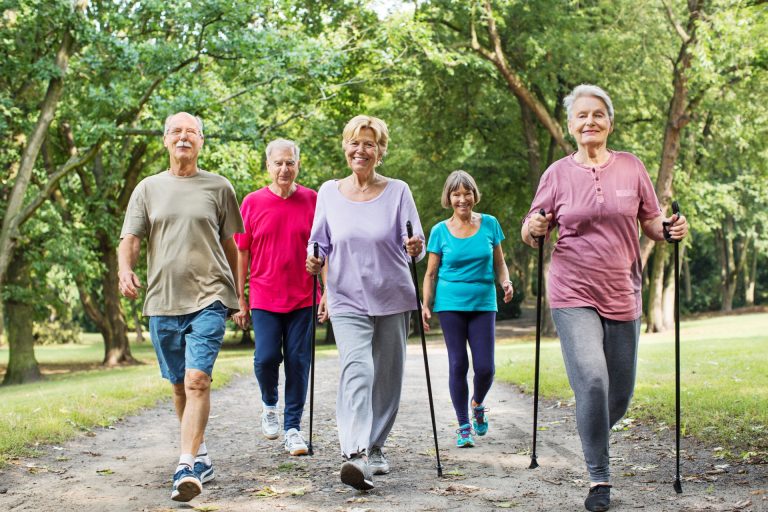
Attitudes toward fitness for older adults have shifted, shaped by the influence of Baby Boomers and the latest scientific research. Today’s over-60 crowd refuses to be sidelined to the sofa. They want to stay fit and active for as long as possible so they can continue doing the things they love. There are many reasons people get out of the habit of regular exercise, from a demanding work schedule to living too far from a gym. Retirement offers opportunities to devote more time to your fitness so you can lay a strong foundation for healthy aging.
How Much Exercise Is Enough?
When it comes to fitness for older adults, the CDC recommends 150 minutes of moderate aerobic activity a week. This is defined as something that raises your heart rate but doesn’t make it difficult to have a conversation, so a fast-paced walk with friends is ideal. Recent research has shown that even getting half that amount about 11 minutes a day can reduce your risk of cardiovascular disease and cancer.
Your Personal Fitness Plan
If you’re wondering how to begin your fitness journey, the first steps include assessing your current fitness level, starting slow and building up gradually. It’s smart to kick off your journey with a personal consultation. At Friends Village, our experts work with residents to create a personalized wellness plan that reflects their preferences, abilities and lifestyle.
Friends Fitness offers residents a variety of ways to achieve their fitness goals, including DrumFIT, a high-energy workout that incorporates drumming movements to benefit both your body and brain. An effective fitness program for older adults should incorporate all four types of exercise: endurance (aerobic), strength, balance and flexibility.
The Four Essential Forms of Exercise
1. Endurance. Cycling, swimming and walking are all excellent ways to raise your heart rate without putting too much stress on your joints. To extend the benefits of a hike, try Nordic walking, which incorporates poles to mimic the movements of cross-country skiing, to work your arms and core. No matter which aerobic activity you choose, keep a water bottle handy during your fitness session, since it’s crucial to stay hydrated.
2. Strength. As we age, muscle mass and bone density start to diminish, and 50% of women develop osteoporosis at some point after menopause. Strength training can help to build both. While it may involve lifting dumbbells or using weight machines, you don’t have to be Arnold Schwarzenegger. Strength training workouts can use stretchy resistance bands or your own body weight, such as chair-assisted squats or wall pushups, to provide the necessary resistance..
3. Balance. Falls are one of the biggest dangers we face as we age. More than a quarter of people over 65 fall every year, often with serious consequences. Diminishing vision, declining inner ear and brain function and reduced lower body strength all contribute to poor balance. Tai chi or simply standing on one foot for 10 seconds at a time (be sure you hold onto a chair at first) can improve concentration and coordination.
4. Flexibility. You may think of stretching as something to do before or after your workout, but flexibility exercises are important in their own right. Staying flexible helps you perform the daily tasks essential to remain independent, whether it’s reaching up to grab a glass from a shelf or bending down to feed the cat. Dynamic stretches, which incorporate movement, are particularly effective in extending your range of motion, and some, like walking lunges, can improve your balance.
Are you ready to discover how to start your fitness journey at Friends Village? There’s no better way to begin than by scheduling a tour of our fitness center, walking trails and other amenities of our picturesque 30-acre community.




